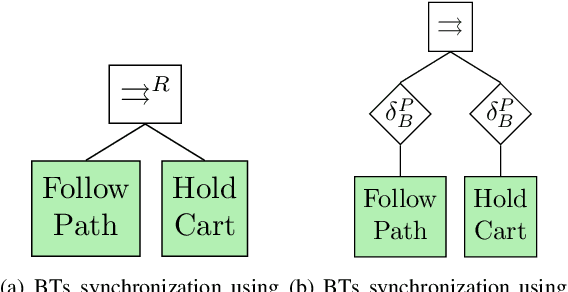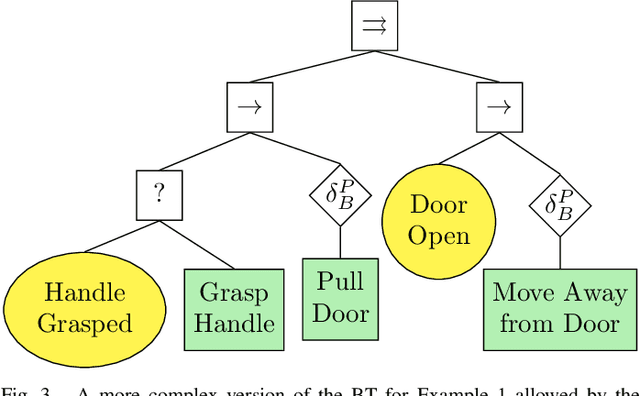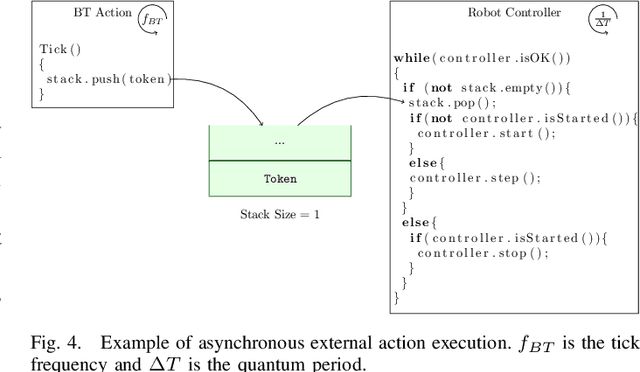Handling Concurrency in Behavior Trees
Paper and Code
Oct 22, 2021



This paper addresses the concurrency issues affecting Behavior Trees (BTs), a popular tool to model the behaviors of autonomous agents in the video game and the robotics industry. BT designers can easily build complex behaviors composing simpler ones, which represents a key advantage of BTs. The parallel composition of BTs expresses a way to combine concurrent behaviors that has high potential, since composing pre-existing BTs in parallel results easier than composing in parallel classical control architectures, as finite state machines or teleo-reactive programs. However, BT designers rarely use such composition due to the underlying concurrency problems similar to the ones faced in concurrent programming. As a result, the parallel composition, despite its potential, finds application only in the composition of simple behaviors or where the designer can guarantee the absence of conflicts by design. In this paper, we define two new BT nodes to tackle the concurrency problems in BTs and we show how to exploit them to create predictable behaviors. In addition, we introduce measures to assess execution performance and show how different design choices affect them. We validate our approach in both simulations and the real world. Simulated experiments provide statistically significant data, whereas real-world experiments show the applicability of our method on real robots. We provided an open-source implementation of the novel BT formulation and published all the source code to reproduce the numerical examples and experiments.
 Add to Chrome
Add to Chrome Add to Firefox
Add to Firefox Add to Edge
Add to Edge